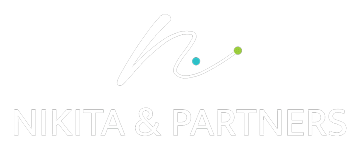
Cyprus IP Box Regime: Turning Innovation into a 2.5% Tax Rate
If your business invests in research, software development, or patented technology, the Cyprus IP Box regime can transform the way your intellectual property (IP) is taxed. With an effective tax rate as low as 2.5%, it is one of the most competitive frameworks in Europe, fully compliant with OECD BEPS standards and EU guidelines.
What Is the Cyprus IP Box?
The regime allows companies to deduct 80% of qualifying profits earned from eligible IP assets. Since Cyprus corporate tax is 12.5%, this translates into an effective tax burden of around 2.5% on qualifying income.
The rules apply to IP created through genuine research and development (R&D), ensuring that the benefit rewards real innovation rather than passive IP holding.
Which IP Qualifies?
The definition of qualifying intangible assets is deliberately broad but excludes marketing intangibles. Eligible assets include:
- Patents and extensions of patent protection
- Computer software protected by copyright
- Utility models and plant varieties
- Orphan drug designations
Excluded assets: trademarks, brands, image rights, goodwill, and other marketing-related IP.
Qualifying Income – More Than Just Royalties
Overall income under the regime covers a wide range of revenue streams:
- Royalties and licence fees
- Embedded income in the sale of products/services using the IP
- Insurance or compensation relating to the IP
- Gains from disposal of IP (except when treated as capital in nature, which are generally exempt)
This breadth makes the regime attractive for technology, pharma, biotech, and gaming companies whose revenue often comes in multiple forms.
The Nexus Approach in Practice
To comply with OECD BEPS Action 5, Cyprus uses the nexus fraction. In simple terms, your tax benefit depends on the proportion of R&D you conduct yourself (or outsource to unrelated parties) compared to overall spending on the IP.
The formula is:
Qualifying Profits = Overall Income × (QE + UE) / OE
- QE (Qualifying Expenditure): Your own R&D spend, including staff, facilities, and unrelated-party outsourcing.
- OE (Overall Expenditure): QE plus acquisition costs and related-party outsourcing.
- UE (Uplift Expenditure): Extra allowance up to the lower of 30% of QE or the cost of acquisition + related-party outsourcing.
The higher your share of in-house or unrelated R&D, the closer you get to the 2.5% effective rate. Heavy reliance on acquired IP or related-party outsourcing reduces the benefit.
Legal vs Economic Ownership – Substance Matters
Cyprus tax authorities (and auditors) focus on the economic owner of the IP—the entity that bears the risks, costs, and enjoys the rewards. Simply registering patents or software in Cyprus without real functions, people, and decision-making in place won’t withstand scrutiny.
This links directly to the OECD’s DEMPE framework:
- Development of IP
- Enhancement of existing assets
- Maintenance of value (e.g. renewals)
- Protection of rights (legal defence)
- Exploitation (commercialisation through licensing, sales, etc.)
Tax benefits follow the functions. If DEMPE is performed in Cyprus, the IP Box reward can be fully unlocked.
Withholding Tax (WHT) Considerations
Cyprus does not levy WHT on outbound dividends, interest, or royalties in most cases. However, royalties paid to a non-resident on rights used within Cyprus are subject to a 10% WHT unless reduced or eliminated under a double tax treaty or the EU Interest and Royalties Directive.
For many groups, treaties or EU rules reduce this to 0%.
Worked Example – Internally Developed Software
A Cyprus company develops and licenses its own software.
- Overall Income (OI): €1,000,000
- Internal R&D spend (QE): €500,000
- Acquisition/related-party outsourcing: €0
- OE = €500,000
- UE = 0 (since no acquisition or related-party outsourcing)
Nexus fraction: (QE + UE) / OE = (500,000 + 0) / 500,000 = 1.0
Qualifying Profits (QP) = €1,000,000 × 1.0 = €1,000,000
80% deduction: €800,000
Taxable QP: €200,000
Corporate tax @ 12.5% = €25,000
Effective tax = 2.5%
If, however, the IP had been acquired and most R&D outsourced to a related party, the fraction would fall and the effective tax rate might rise to 7–8%.
Other Key Advantages of Cyprus
- 12.5% corporate tax, one of the lowest in the EU
- No WHT on outbound dividends (subject to conditions)
- Access to 65+ double tax treaties
- Possibility to combine with Notional Interest Deduction (NID) and group loss relief
- Strong legal protection as an EU member and signatory to major IP treaties (WIPO, Paris Convention, Berne Convention, etc.)
Final Thoughts
The Cyprus IP Box regime is not just a low-tax tool—it is a structured, internationally compliant incentive for companies that invest in creating and enhancing intellectual property. With the right planning, record-keeping, and substance in Cyprus, businesses can achieve an effective tax rate as low as 2.5% while safeguarding their IP under EU law.
Ready to make your innovation work harder?
The Cyprus IP Box regime can cut your tax rate on qualifying profits to just 2.5% – but only if it’s structured and documented correctly. At Nikita & Partners, we help businesses design, implement, and maintain IP structures that are both compliant and tax efficient.
